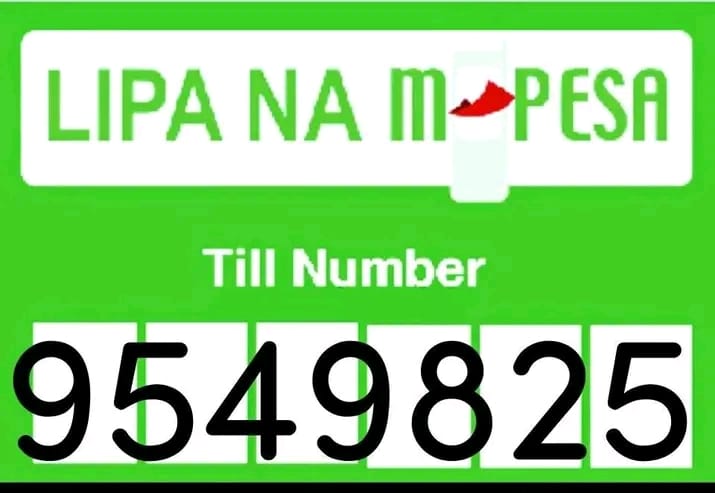
simply amazing, always for you.
If you’re one of the millions of borrowers juggling multiple student loan payments each month, you’re not alone. Student debt in the U.S. has ballooned to over $1.7 trillion, and many borrowers feel overwhelmed, confused, and stuck. Fortunately, student loan consolidation offers a practical way to streamline repayment, lower stress, and even gain access to better repayment options.

But let’s be clear—consolidating your student loans isn’t a magic solution. It’s a tool. And like any tool, it works best when you understand how to use it. This comprehensive, no-fluff guide will walk you through everything you need to know about student loan consolidation: what it is, how it works, when to use it, and whether it’s right for you.
What Is Student Loan Consolidation?
Student loan consolidation is the process of combining multiple federal student loans into a single new loan through the U.S. Department of Education. The result is one loan, one monthly payment, and one servicer.
The new loan is called a Direct Consolidation Loan, and it comes with a fixed interest rate, based on the weighted average of your existing loans’ rates, rounded up to the nearest one-eighth of a percent.
It’s important to distinguish between consolidation and refinancing. Consolidation is a federal process available for federal loans only. Refinancing, on the other hand, is done through private lenders and can include both federal and private loans—but at the cost of losing federal protections.
Why Consolidate Your Student Loans?
Here’s why consolidation might be worth considering:
1. Simplify Your Life
Let’s start with the most obvious benefit: fewer bills. If you’re making separate payments on five or six different loans, consolidation cuts through the chaos by giving you a single monthly payment. That can significantly reduce the likelihood of missing a payment and incurring late fees or dings to your credit.
2. Unlock Eligibility for Forgiveness and Repayment Plans
Some federal forgiveness programs, such as Public Service Loan Forgiveness (PSLF), require borrowers to have Direct Loans. If you’re carrying older federal loans—like FFEL or Perkins Loans—consolidation may be your ticket to eligibility.
Consolidating also gives you access to income-driven repayment (IDR) plans, which cap your monthly payments based on your income and family size and can lead to forgiveness after 20 or 25 years.

3. Lower Monthly Payments (But Be Careful)
Consolidation allows you to extend your repayment term—up to 30 years, depending on how much you owe. This can significantly lower your monthly payment. The trade-off? You’ll likely pay more in interest over time. It’s a short-term relief that can lead to long-term costs if you’re not careful.
4. Fixed Interest Rate
If you have older federal loans with variable interest rates, consolidating will lock you into a fixed rate for the life of the loan. This adds predictability and shields you from future rate hikes.
When Consolidation Doesn’t Make Sense
While consolidation can be useful, it’s not always a smart move. Here’s when you might want to think twice:
- You’re close to loan forgiveness. If you’ve been making qualifying payments toward PSLF or under an IDR plan, consolidating will reset your progress. All previous payments will be wiped, and the clock starts over.
- Your loans already have borrower benefits. Some loans come with interest rate discounts, principal rebates, or other perks. Consolidation often eliminates those.
- You only have one loan. If you’re managing a single loan, there’s not much to consolidate.
- You’re hoping for lower interest rates. A Direct Consolidation Loan won’t give you a lower rate—it just combines your existing rates into a weighted average.
Step-by-Step Guide to Federal Student Loan Consolidation
Step 1: Gather Information
Before you consolidate, get a full picture of your current loan situation. Log into your Federal Student Aid account and pull up your loan history. Write down:
- Types of loans
- Interest rates
- Balances
- Servicers
Knowing what you’re dealing with helps you make informed decisions about which loans to consolidate and what repayment plan to choose.
Step 2: Check Eligibility
Most federal student loans are eligible for consolidation, including:
- Direct Subsidized and Unsubsidized Loans
- PLUS Loans (both Parent and Graduate)
- Stafford Loans
- FFEL Loans
- Perkins Loans
However, you must either be in your grace period or have entered repayment. If your loans are in default, you’ll need to meet specific conditions to consolidate them (like agreeing to an income-driven repayment plan or making voluntary payments first).
Step 3: Decide What Loans to Consolidate
You can choose to consolidate some or all of your eligible loans. Think carefully before including loans that are already on a path to forgiveness or carry special borrower benefits.
Also, keep in mind that Parent PLUS loans that are consolidated are only eligible for the Income-Contingent Repayment (ICR) plan—not the more generous IDR options available for other loans.
Step 4: Choose a Repayment Plan
When consolidating, you’ll choose a repayment plan based on your loan balance and financial situation. Your options include:
- Standard Repayment Plan: Fixed payments over 10 years.
- Graduated Repayment Plan: Payments start lower and increase every two years.
- Extended Repayment Plan: Up to 25 years, with fixed or graduated payments.
- Income-Driven Repayment Plans: Monthly payments based on income and family size. These include:
- Income-Based Repayment (IBR)
- Pay As You Earn (PAYE)
- Revised Pay As You Earn (REPAYE)
- Income-Contingent Repayment (ICR)
Choosing the right plan is crucial. If you expect your income to rise, a graduated or standard plan might work. But if you’re looking for flexibility or forgiveness, one of the IDR plans will be a better fit.
Step 5: Apply for a Direct Consolidation Loan
Once you’ve made your decisions, go to studentaid.gov/consolidation and complete the online application.
The form will ask for:
- Your FSA ID
- Your loan choices
- Your desired servicer (you can pick from a list)
- The repayment plan you want
- Consent to receive electronic communications
The application takes about 30 minutes to complete. Processing can take 4 to 6 weeks.
Step 6: Keep Making Payments
While your application is being processed, don’t stop making payments on your existing loans unless your servicer tells you otherwise. Falling behind could hurt your credit or cause unnecessary late fees.
What About Private Loans?
Federal student loan consolidation does not include private loans. If you have private loans—or a mix of private and federal—you’ll need to refinance through a private lender to combine them.
This can be a smart move if:
- You have a strong credit score
- You have a stable income
- You want to lower your interest rate
However, refinancing federal loans into a private loan means giving up all federal protections, including:
- Deferment and forbearance
- Income-driven repayment
- Loan forgiveness options
- Interest-free periods during economic hardship
For that reason, refinancing is best suited to borrowers who are confident they won’t need any federal benefits.
Direct Consolidation vs. Refinancing: Know the Difference
| Feature | Direct Consolidation | Private Refinancing |
|---|---|---|
| Available for | Federal loans only | Federal and private loans |
| Credit check | No | Yes |
| Interest rate | Weighted average (rounded up) | Based on credit and income |
| Loan forgiveness eligible | Yes | No |
| Income-driven repayment | Yes | No |
| Fixed rate | Yes | Yes (some variable options) |
Common Misconceptions About Consolidation
“Consolidation will lower my interest rate.”
Not quite. Your new rate is the weighted average of your existing rates, rounded up to the nearest 1/8 of a percent. It won’t save you money in interest unless you switch to a longer term and make smaller monthly payments—which increases the total interest paid over time.
“Consolidation erases my debt.”
No. You’re not getting rid of your loans—you’re just repackaging them. You still owe the same amount (and probably more, once interest is capitalized).
“I can consolidate federal and private loans together.”
Only through private refinancing. The federal government doesn’t consolidate private loans.
How to Know If Consolidation Is Right for You
Consolidation can be a smart move if:
- You want to qualify for Public Service Loan Forgiveness
- You need to get out of default and back on track
- You’re overwhelmed by multiple payments
- You want access to IDR plans
- You need to reduce monthly payments temporarily
But if you’re close to forgiveness, don’t want to extend your repayment period, or have loans with special terms or benefits, you may want to hold off.
Use Consolidation Strategically
Student loan consolidation is not a one-size-fits-all solution. It can offer real benefits—simplification, access to better repayment options, even forgiveness eligibility—but only if you understand the trade-offs.
Think carefully about your long-term goals. Are you pursuing PSLF? Do you need temporary relief with lower monthly payments? Are you trying to reduce your interest costs?
Only when you know what you’re aiming for can you decide whether consolidation is the right step forward.
And remember: consolidation is free through the U.S. Department of Education. Don’t fall for scams that charge fees to “help” you consolidate. You’ve got this—just take it one step at a time.

Support Our Website!
We appreciate your visit and hope you find our content valuable. If you’d like to support us further, please consider contributing through the TILL NUMBER: 9549825. Your support helps us keep delivering great content!
If you’d like to support Nabado from outside Kenya, we invite you to send your contributions through trusted third-party services such as Remitly, SendWave, or WorldRemit. These platforms are reliable and convenient for international money transfers.
Please use the following details when sending your support:
Phone Number: +254701838999
Recipient Name: Peterson Getuma Okemwa
We sincerely appreciate your generosity and support. Thank you for being part of this journey!
